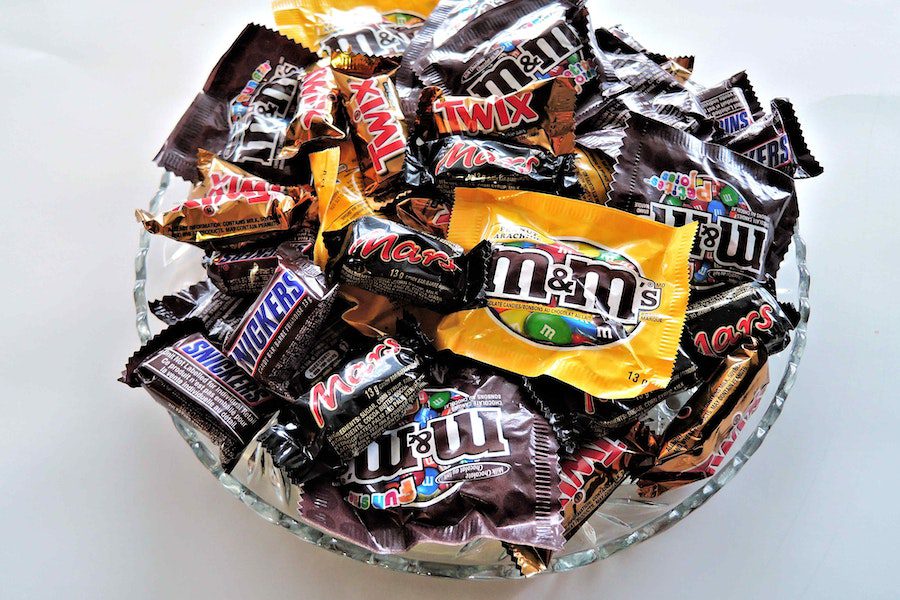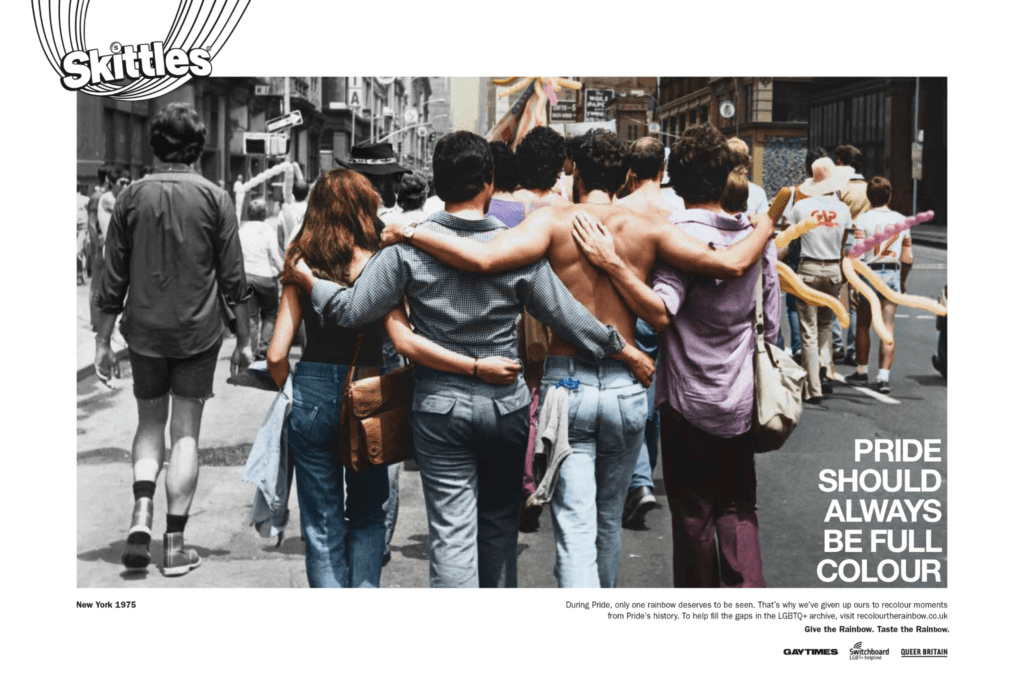Chocolate Branding: Lessons From 3 Iconic Chocolate Brands
Who said money can’t buy happiness? It can buy chocolate, and they’re more or less the same thing. So, chocolate brands are not just selling a product. They are marketing happiness! They are trying to find a balance between tugging heartstrings and satisfying cravings. That’s what makes chocolate branding trickier than it appears.

The global chocolate consumption in 2022 was 7.5 million tons. So the popularity of chocolates and their demand remains unwavering. However, this comes with a catch. There’s stiff competition for chocolate brands.
When you own a chocolate brand you are competing with local confectioners, bakeries, global chocolate brands, and a variety of other contenders. But all that should also make chocolate branding all the more exciting for you.
So, there’s always a new challenge, a new strategy to experiment with. And what better way to find these strategies than by looking at brands that have already established themselves in this space?
Today, we’ll be talking about global chocolate brands that have risen to be exemplary names in chocolate branding.
Chocolate branding: how the big chocolate brands do it
From delivering memorable experiences in the form of chocolate museums to gamified content on digital media, the chocolate brands we are about to discuss have done it all. One of the first lessons to learn from them is to diversify your approach to spread across various platforms and to experiment with various content formats as well.
Many chocolate brands have managed to spread their wings and strongly park themselves in the industry. But let’s look at 3 popular chocolate brands with the most creative marketing strategies and some fun and memorable campaigns.
Mars, Incorporated
From Bounty bars to M&M’s, Galaxy chocolates to Twix, a wide range of the world’s most loved chocolates are from Mars.
With net sales of more than 18 billion U.S. dollars in 2021 Mars Wrigley Confectionery was the leading chocolate and cocoa brand in the world. So, yes, this brand is definitely a reliable name to look for inspiration.
The Left Twix Right Twix Dispute
This iconic Twix campaign is a clear example of the strength of a “fun” element in chocolate branding.
At the time the ad was created, the challenge was to give a boost to the Twix brand for better brand positioning. So, Mars came up with the famous Left Twix – Right Twix campaign. And this ad takes a fun twist on perspectives. For this, the brand came up with two versions of the Twix bar and asked customers to pick a side.
While theoretically, they were both the same thing, the series of video ads from the brand and the way the brand promoted the idea fueled the interest in the campaign.
Kimp Tip: Now and then you need to incorporate novel ideas. Without this, brand differentiation becomes difficult, especially with the growing competition among chocolate brands. In this case, the brand brilliantly played with differences in colors to establish the difference between Left Twix and Right Twix. And yet the campaign did not deviate from the primary brand identity.
Similarly, when you come up with campaigns with strong identities of their own, remember to tie these back to your brand for familiarity.
Need help establishing your brand identity through strong visuals? Get Kimp.
Alexa M&M’s Movie Night – intuitive ways to establish brand love
After its success the year it was inaugurated (2021), the campaign was brought back the next year as well.
For this, the brand teamed up with Alexa and came up with an Alexa theme that allowed users to get recommendations for movies. Was this ad a hit? In 2022, when this campaign ran for Halloween, it earned the brand a $10.34 ROAS showing how successful the idea was.
Skittles – Recolour The Rainbow – the need for standing for a strong purpose
Mars’s campaign for Skittles titled Recolour the Rainbow shows how Mars has been winning hearts by taking a stand for topics that deserve to be discussed.
The Recolour the Rainbow campaign took old photographs in Pride history and recolored them to bring those crucial moments of history back to life.
In any ad design, it is the little details that count. Notice that the usually vibrant colors around the Skittles logo is missing in the above ad. This goes with the copy in the ad to deliver a powerful message and depict solidarity.
To support the idea the brand also came up with a limited edition Skittles Pride Pack without their usual rainbow of colors.
Kimp Tip: There are two quick things to learn from this campaign –
- Your copy and design need to go hand in hand for the most effective communication of your ad message.
- For people to grasp the idea and for the idea to become truly memorable, you need a combination of media for maximum impact. In this case, the brand used these designs on social media and other digital ads as well as in OOH. Finally, the packaging design on the limited edition packs were also aligned with the message.
Such levels of consistency are possible with a dedicated design team.
Hershey’s
Founded in the late 1800s, and headquartered in Pennsylvania, The Hershey company is one of the largest chocolate brands in the world known for its diverse range of products.
HerShe campaign
The HerShe campaign from Hershey’s shows the power of standing for a cause and how it helps in shaping a brand image. About 70% of consumers like it when brands stand for social and political issues. So, if you want to go beyond selling chocolates and strengthen your chocolate branding strategy, this Hershey’s campaign is a great source of inspiration.
The campaign started as the “Celebrate She campaign” with the personalization of the packaging on the Hershey’s bar to highlight “She” close to International Women’s Day.
Slowly, the campaign was expanded to various other markets like India, for example. And the way Hershey’s fine-tuned the idea for the Indian market is a lesson in local marketing for a global brand.
Hershey’s entered the Indian market only in 2008. By then brands like Cadbury and Nestle and local brands like Amul already had strong positions in the market. So, Hershey India has been using creative campaigns and strategies to rise above the competition.
One of them has been the widely-acclaimed HerShe campaign. For the campaign, the brand came up with an anthem to set the mood. And the packaging redesign was extended to the Indian market as well. But the women on the packaging were the less-known Indian women who excel in various fields.
This heart-warming campaign honors the less-known achievers. That’s one way to gain your audience’s attention.
Hershey’s Holiday Bells- a lesson in timeless ideas
Sometimes ads, taglines, and ad jingles are more than just marketing materials. They weave into customer emotions and become inseparable. This is possible only through a simple timeless idea delivered consistently by a brand. And Hershey’s knows how to do that.
The Hershey’s bells commercial has been a classic. Customers have gotten so attached to the commercial that when the brand added a fun twist to the jingle, not many liked it. But yes, Hershey’s did not remove the iconic jingle altogether and so the brand was saved.
Now coming back to our chocolate branding lesson from this – aim for timelessness. Chocolates are not the kinds of products that people buy once and forget or buy only once in a few years. It is the kind of product that some buy on a monthly if not a weekly basis. The spikes in the purchase of chocolates during holidays don’t even need an introduction.
So, if you are looking to stand out, if you are looking to bring your audience back to your brand again and again, holiday after holiday, create timeless branding designs. These can be in the form of a simple and memorable video ad like that of Hershey’s or a campaign that you run every year.
The idea here is memorability. While campaigns adapted to trends help increase your brand reach, campaigns that stand the test of time are those that help win customer loyalty. These are particularly helpful close to the holiday season.
Cadbury
Headquartered in Greater London, this British multinational company is the second-largest confectionery company. Dairy Milk and Creme Egg are some of the most popular chocolates from the brand. Looking for ways to transform your chocolate branding strategy? Here are some ideas from popular chocolate brands and their campaigns.is the epitome of chocolate branding with its many experiential campaigns and innovative social media strategies. Let’s look at a few of them.
Cadbury Gorilla – humor + innovation
There are ads and then there are ads that feature Gorillas playing drums!
Well, these days you see ads featuring some crazy concepts. There are animated ads. There are ads featuring sloths unleashing their “Flamin’ Hot”. But back in the day when brands were sticking to traditional ad concepts, Cadbury made heads turn with its iconic ad featuring a gorilla playing drums and thoroughly enjoying the process.
The ad was an instant hit. It reportedly increased sales in Britain and Ireland by 6%. Why did this ad work? What can chocolate brands learn from this ad?
- An element of humor works most of the time. And given that you are marketing happiness (aka. chocolates), humor is a fool-proof emotion to incorporate in your ads.
- Aim at stimulating your audience emotionally and your ads work. In this ad, there’s an element of surprise. A gorilla playing the drums – now that’s not something you see every day, right? So, that’s definitely something you’ll remember for a long time. And when you see the brand, Cadbury chocolate at a store later, you’ll probably think of the ad. Brand recall – check ✔️.
Cadbury Secret Santa – a lesson in experiential marketing
From allowing customers to personalize their Cadbury bar to gift to their loved ones to Creme Egg cafe – Cadbury has a large share of experiential campaigns in its history. Another one that’s recently very popular is the Secret Santa campaign.
For the campaign, there were static posters placed around the UK that let customers scan a QR code to send chocolates to their loved ones. Cadbury’s decision of acting as a secret Santa paid off and people loved the idea.
There are many brilliant marketing lessons in chocolate branding from this one campaign:
- First is definitely the idea of creating experiences rather than focusing just on the “promotion” part. When you create experiences you are stimulating your customers emotionally and this builds better relationships with them. That’s going to help you stand out from other chocolate brands.
- Second is the wise usage of omnichannel marketing. Displaying ads on social media is not enough. Displaying billboards in popular locations is not enough. For nurturing long-term relationships with your customers, you need to constantly stay in touch with them. You need to connect with them on multiple platforms like social media, for instance. That’s what Cadbury manages to achieve with its Secret Santa campaign.
Kimp Tip: Outdoor advertising is beneficial to brands in many ways. For chocolate brands in particular, this can be a huge plus. Because you need people to think of your brand when they visit a local store. And this is more likely to happen when they cross a billboard as they drive to the store. The key is to make your outdoor ads ready for the digital age. Like Cadbury added a QR code in this case.
Need help creating outdoor ads for the digital age? Get Kimp!
Create stunning visuals for chocolate branding with Kimp
Whether you are advertising your brand in a local store or engaging your customers on social media or connecting with them through interactive packaging design, a lot depends on visuals. You need visuals that tell your brand story. Visuals that bring in new leads and keep your existing customers engaged. It is with strong visuals that most popular chocolate brands manage to bring their creative campaigns to life. What’s one way to take care of all these visuals for your chocolate branding strategy? Sign up for a Kimp subscription.
Register now and try our subscriptions for free for 7 days.





